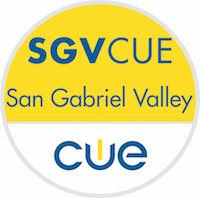Yup, most students’ dreams of flying paper airplanes in the classroom came true. My students researched, folded, and flew them in my classroom all last week. Some flew them in another teacher’s classroom and at the lunch tables, against my direction to keep their planes to themselves. They didn’t get in trouble; I was informed that they asked for permission in the teacher’s classroom and were actually trying to perfect their throw/launch/thrust during lunch time as witnessed by the counselor’s questioning of their actions.
 Final flights in the cafeteria on Friday.
Final flights in the cafeteria on Friday.
As a new STEM PBL middle school teacher starting on this wild adventure, what did I learn from this experience? To avoid the giant laundry list, here are the top 10 items:
- One full week is not enough for a project that is as simple as a paper airplane.
- Flying paper airplanes is SO MUCH FUN. Every student folded and tested at least one plane, although not everyone had their plane on the “final flight” day.
- Not all students appreciate the application of the engineering design process – the need to document and reflect slows them down – they just want to get to the action.
- A lot of my students, despite being in middle school, lack fine motor skills to make “crisp” folds.
- Instead of making modifications on the plane they’ve folded, the students wanted to fold another one that is different.
- Out of almost 160 students, only 2 folded an original plane that they created based on other designs they saw via YouTube, Instructables, etc.
- OneNote ROCKS my socks, but not the students’ socks, yet.
- Given the choice to work alone or with a partner, most chose to work with a partner.
- Girls need more encouragement from me, especially the ones who aren’t the “A” students.
- I give them too many choices in the spirit of fostering creativity.
What does this mean?
- My super, duper, well-planned syllabus is thrown off track. It’s ok. This is about student learning. Depth of understanding and application of concepts over breadth.
- I need to ensure my students feel ready for the final “show day”of the project and have something to show before they leave.
- I will need to provide specific times during class for them to document and reflect on their designs and processes, until documentation becomes second nature in the trial process.
- I have not figured out ways in which I can help them improve their fine motor skills aside from repetition of the same task.
- I wonder if there’s something about failure with the desire to scrap everything and start over with a new idea. Could there be something about resilience and persistence? We’ll have a class discussion about this with our upcoming project.
- I was surprised by their desire to follow rather than create. Many students said they didn’t know how to fold a paper airplane, so they felt the need to watch a video and follow the instructions. My mind raced back to Michael Apple’s comment that educators are creating machines to follow directions. Then again, personally, I feel that I cannot innovate without having a basic idea of something first. Or maybe, if we spent more time on folding the planes, rather than just one week, they would come up with their own plane designs.
- The students need more time with OneNote to discover all of its cool tricks before they can appreciate it like I do. I will need to integrate small portions of usage instruction each week.
- Two brains are better one. Having the choice to have a partner is important to them.
- I will encourage and high five the bajeebees out of these young ladies so that they have the confidence to feel like they are rockstars. This is really a systemic, societal issue and we as educators need to be acutely aware of our actions and words.
- I need to provide the basic structure of a project. Then provide guided creativity (what an oxymoron) so that my students are not overwhelmed by the multiple possibilities and variations.
So, as we wrap up paper airplanes, I can’t wait to see the projects they create with parachutes next week. I’m leaning towards everyone creating a “control” parachute so they know the basic structure. I’ll see my creating experience on Saturday when I build all the parachutes and decide. Stay tuned!


Recent Comments